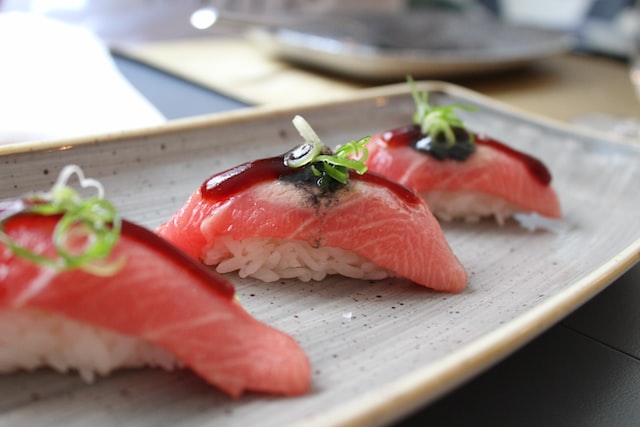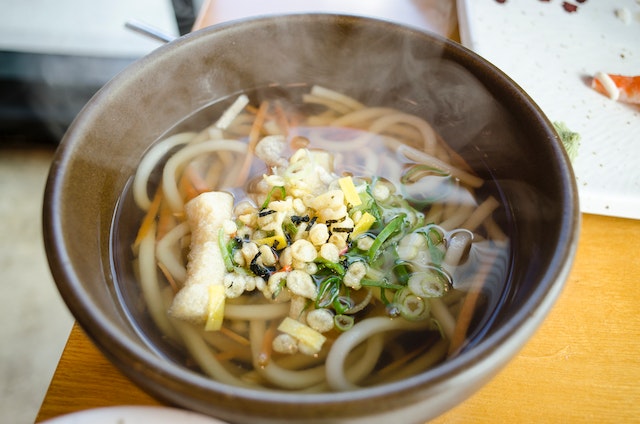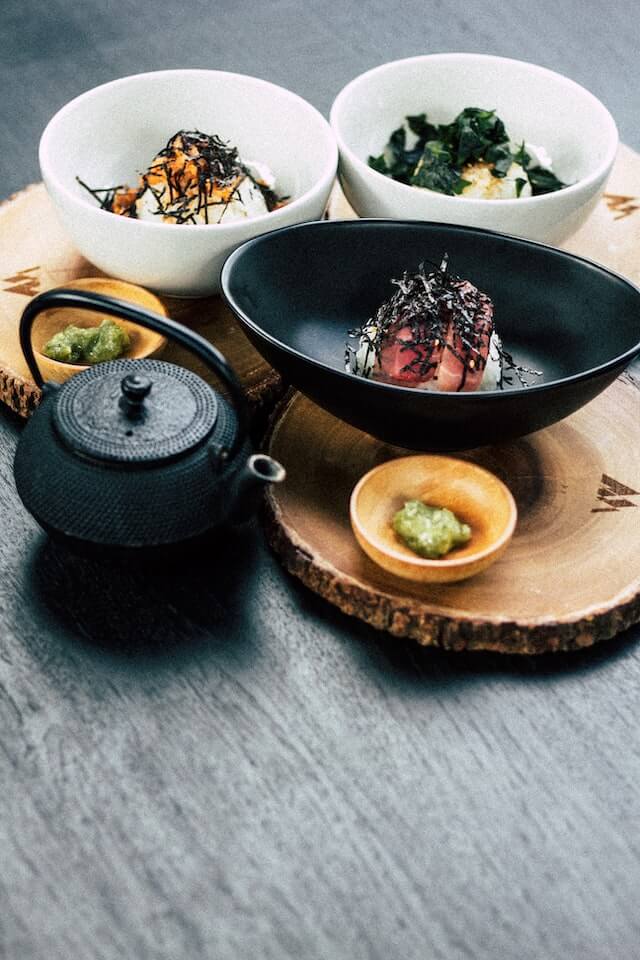Cooking Japanese Food is incredible.
There’s something truly special about cooking Japanese food that sets it apart from any other cuisine in the world. It’s an experience that engages all of your senses, from the smell of freshly cooked rice to the sound of sizzling tempura.

One of the most iconic Japanese dishes is sushi, which is as beautiful as it is delicious. This dish requires a precise attention to detail, as each piece of fish must be cut perfectly and placed with care onto the bed of perfectly seasoned rice. But once you take that first bite, the subtle flavors burst with a perfect balance of acidity, sweetness, and umami.
Another famous Japanese dish is yakitori, which is simply skewered grilled chicken. Yet, the combination of a salty-sweet sauce called tare and the smoky flavor from the grill make yakitori a mouthwatering culinary experience. And it’s not just chicken, but also beef, pork, and even vegetables that are all cooked on skewers in much the same way.
Japanese cuisine also emphasizes the freshness of ingredients, which is reflected in dishes like shabu-shabu. A hot pot dish consisting of thinly sliced meat and vegetables cooked in a flavorful broth, it’s a dish that’s as healthy as it is delicious.
Cooking Japanese food allows you to explore many unique and delicious recipes. Whether you’re a seasoned chef or just beginning to learn how to cook, Japanese cuisine offers endless possibilities. From sushi to yakitori, and from shabu-shabu to tempura, you’ll be sure to find something that tickles your taste buds and leaves you feeling satisfied. So why not give it a try? Who knows, you may just discover your new favorite dish!
Secrets of Japanese Cooking

One cool thing about Japanese culture is that they don’t waste much when it comes to food. Conservation is important in the culture, after all. For example, when a cow is killed for food almost every part is eaten, from the tongue to the intestines.
Other secrets of Japanese cooking include the use of dashi, a broth made from ingredients like bonito flakes and kelp that form the base of many Japanese dishes. The use of umami-rich ingredients like soy sauce and miso also gives Japanese cuisine its distinct savory flavor. Additionally, the art of plating and presentation, known as kaiseki, is highly valued in Japanese cuisine. Each dish is carefully arranged to enhance the visual appeal and to provide a sensory experience that extends beyond just taste.
Another interesting aspect of Japanese cooking is the use of traditional techniques like fermentation and pickling. Foods like umeboshi, pickled plums, and natto, fermented soybeans, are staples in Japanese cuisine and provide a unique and complex flavor profile. Additionally, Japanese cooking emphasizes the use of seasonal ingredients, meaning that dishes can vary throughout the year depending on what’s fresh and available.
Cooking Japanese food also provides an opportunity for cultural exploration. Each dish has its own history and cultural significance, from the symbolism of sushi rolls to the communal aspect of hot pot dishes. By learning about these cultural traditions and incorporating them into your cooking, you can deepen your understanding and appreciation of Japanese culture.

In conclusion, cooking Japanese food is a rewarding and exciting experience that not only provides delicious meals, but also allows for cultural exploration and appreciation. From the precise technique of sushi to the rustic simplicity of yakitori, there is something for everyone to enjoy in Japanese cuisine. So why not take a trip to your local Asian market, pick up some authentic ingredients, and start exploring the world of Japanese cooking today?
Resources to learn Japanese cooking.
Just One Cookbook – Just One Cookbook is an excellent resource for anyone who wants to learn how to cook Japanese food. The website offers a diverse range of Japanese recipes, cooking techniques, and ingredient guides.
JapaneseCooking101 on YouTube is a YouTube channel that offers step-by-step video instructions on how to cook a wide variety of Japanese dishes. The channel is run by two Japanese women who are passionate about cooking and sharing their recipes.
Japanese Umami Flavors
The Japanese discovered the “umami” flavor 1907, thanks to the work of Dr. Kikunae Ikeda. Umami is a savory flavor unlike the other flavors of sweet, sour, and salty, and is present in most Japanese cooking.
In 1907, Dr. Kikunae Ikeda, a Japanese chemist and professor at the Tokyo Imperial University, made a groundbreaking discovery that would revolutionize the world of gastronomy. Dr. Ikeda had been curious about the deliciousness of traditional Japanese dashi broth and sought to uncover the source of its unique and savory taste.
Through careful analysis of the broth’s chemical composition, Dr. Ikeda was able to identify a previously unknown taste, which he named “umami,” which roughly translates to “pleasant savory taste” in English. He found that umami is caused by the presence of glutamate, an amino acid that occurs naturally in many foods, including meats, fish, vegetables, and fermented products.

Umami usually comes from traditional ingredients in Japanese cooking: specifically, kombu seaweed used in dashi stock, shiitake mushrooms, and bonito flakes. These ingredients are uncommon outside of Japan.
Japanese cuisine is known for its delicate balance of flavors, including sweet, sour, salty, and bitter, in addition to umami.
But umami isn’t the only flavor used in Japanese cuisine: For example, in traditional Japanese cuisine, the sweet flavor is often added through the use of mirin, a sweet rice wine, or sugar, which is commonly used in marinades and sauces. The sour flavor is achieved through the use of vinegar, citrus fruits, and other acidic ingredients like pickled plums or umeboshi.
Taste and Preparation
The beauty of Japanese cuisine extends beyond just the taste and preparation of the food. It is also deeply rooted in the culture and history of Japan. For example, the tea ceremony, or cha-no-yu, is a traditional Japanese ritual that emphasizes the importance of hospitality and respect for others. It involves making and serving tea in a ceremonial manner, with specific steps and etiquette to follow. Similarly, the cooking and presentation of food in kaiseki cuisine is a reflection of the importance that Japanese culture places on aesthetics and simplicity. This attention to detail and respect for tradition is what makes Japanese food and culture so fascinating and unique.
Another interesting aspect of Japanese cooking is the emphasis on balance and harmony in flavors and textures. For example, dishes like tempura and tonkatsu are usually served with a side of grated daikon radish, which helps to cut through the richness of the fried food and provide a refreshing contrast of flavors. Similarly, sushi is often served with pickled ginger and soy sauce, which help to balance out the flavors of the rice and fish.
In addition to its delicious food and cultural significance, Japanese cuisine is also renowned for its health benefits. Many Japanese dishes are low in fat and calories, and are made with fresh, nutrient-rich ingredients. Additionally, the emphasis on portion control and balance in Japanese cooking can help prevent overeating and promote a healthy lifestyle.

In conclusion, cooking Japanese food is not just about making delicious meals, but about embracing the rich culture and history of Japan. By exploring the diverse flavors and techniques of Japanese cuisine, we can gain a deeper appreciation for the country and its people. So why not embark on a culinary adventure, and discover the wonders of Japanese food for yourself?

